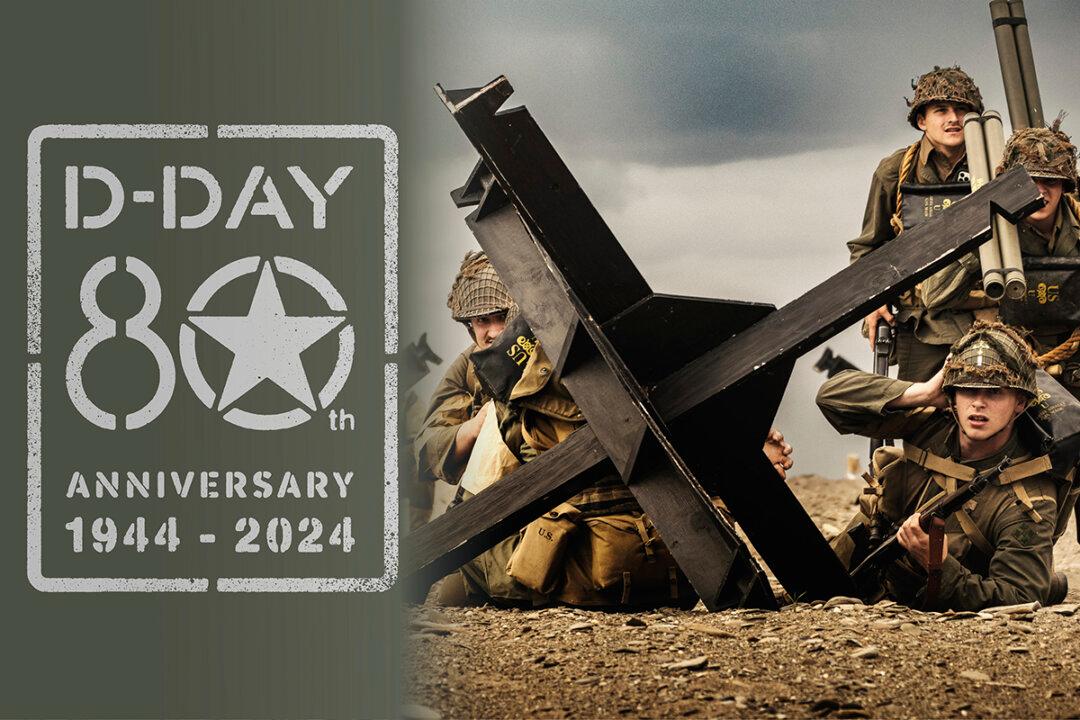TELLURIDE, Colo.—This is a town of tinkerers and inventors, where free spirit meets practical ingenuity: Thanks to Nikola Tesla, local lore has it that Telluride’s street lights were the first ones in the world to be illuminated by alternate current. Miners, who dwelled up in high country above the town, saw their cabins illuminated by light bulbs. It was also here that Butch Cassidy took an innovative turn in his thinking, departing from his usual horse stealing to rob his first bank.
Telluride is tiny: population 2,444, 8 blocks by 12 blocks, the length of which is easily traversed on foot in 20 minutes. Walking down its main street, with its Victorian façades and clapboard storefronts, it’s amazing that even with the floods of visitors, it feels like such a small town. An uninterrupted walk may take 20 minutes, but locals know it takes much longer: every few minutes you’re stopping and catching up with someone.
Its small-town character is preserved in part thanks to Mountain Village, located a short gondola ride away. This is where resorts, hotels, and fancy homes—and parking lots and garages—have created a big footprint, taking some of the lodging pressure off Telluride.
The call of the outdoors here is irresistible for locals as well as visitors. Mountains border the canyon where Telluride is located on three sides, and trails meander off in every direction.
Via Ferrata
One hike that’s become immensely popular is the Via Ferrata, which was completed in 2007. In Europe, these “iron ways” dot the Alps, originally allowing troops during World War I to move across challenging vertical terrain, with the help of anchors such as steel cables or ladders.In the U.S. they are rare; in Telluride a local climbing legend, Chuck Kroger—another free spirit—started building a horizontal Via Ferrata. He passed away but friends decided in tribute to finish up the route for him. When word of this route reached the Forest Service at the time, the reaction was to shut it down. But during the time it took for the agency to come to a decision, the route only grew more popular, going from a local secret to a destination. The local Forest Service now supports keeping it in place.

Josh King/Mountain Trip
Todd Rutledge, who runs guiding service Mountain Trip, said that his company went from guiding 30 to 300 hikers a year. This year, the 300 mark had been already been passed by mid-June.
The Via Ferrata doesn’t require a great deal of technical ability—being reasonably fit is enough—but it does require some gear and lots of mental chutzpah. A guide is highly recommended.
Rock climbing is equal parts physical and mental, Rutledge says: “It’s hard work. You’re trying to solve a problem that’s in front of your face—moving to the next hold—and overcoming the fear of falling, which is real and powerful.”
On the Via Ferrata, intense physical hardship and finding the next hold aren’t issues. But that “primal aspect,” the fear, is still there.
Rutledge has guided climbs to Denali and Aconcagua, but he says, “I still get butterflies every time.”
He did the math among his clients—last year about 1 percent decided to turn back.
It starts with a short drive out of town, and a beautiful hike taking in the views, until you come to what’s called the “main event”—where the trail, which had been narrowing by and by from about a foot in width, simply disappears. Around a rocky outcrop, where a bench in honor of Kroger has been installed, it looks like you’re about to step into the void.
Rutledge is there with another of his guides, tutoring our small group in how to negotiate the main event. Each of us is harnessed, donning helmets and carrying a lanyard and two locking carabiners that are used to clip onto the steel cable. The cable runs horizontally along the route, fastened to the rock in segments.
The key is to use one hand to clip one carabiner onto the cable, and then the other, and to not clip off both carabiners at the same time. At regular intervals, iron rungs provide a hold for the hands and (most of the time) a perch for the feet.
With a big breath, I step onto an iron rung. Below is a 324-foot drop into nothingness. My mouth goes dry—and it would stay that way during the entire hike.
Everyone’s mental journey on the Via Ferrata is different. Ruminations on life and the afterlife, the silly urge to take a selfie, reflections on how we take solid ground for granted. All of these go through my mind at some point, and then, start to fade away.
All that matters is the next step forward.
“Clip on-clip off” becomes a chant in my head. It comes in the voice of Mr. Miyagi from “The Karate Kid.” The guy climbing in front of me thinks it is funny. “Clap on, clap off!” he says cheerfully. Except God forbid—if you fell here you wouldn’t get up again.
In one spot, it takes the entire length of my nearly 5-foot-short body, on tippy toes with arms outstretched, to reach both the upper and lower rungs.
After a while, I forget that a bit of metal is all that is standing between me and a vertiginous drop. Clip on, clip off, clip on, clip off. It is like driving, with the drop becoming part of my peripheral vision, in the rear view mirror of a car. You can’t drive using just a rear view mirror; you’ve gotta keep your eyes on the road.
At one point I try for a selfie—photos aren’t discouraged, but the guides will tell you, just don’t be taking them while you’re in action. So I stop and take my phone out. At that exact moment, I see I have an incoming call. I let it go. In the photo I look ashen, with a slight look of concern. It looks like I’m very close to a rock, with a pretty mountainous background. Nothing betrays the big air beneath me.
So I decide to take a photo of my feet, and when I look down, my stomach drops. The top of the trees are tiny. I decide I’d better bring Mr. Miyagi back and focus on the next step.

Selfie: feet, drop, trees. Big breath. Channaly Philipp/The Epoch Times
Traveling in the small group, I am somewhere between the middle and the rear and sometimes miss or can’t hear instructions from the guide up front. Scott repeats them to me and makes sure I get through the iffy parts.
“You’re a good communicator,” I tell him.
“That’s not what my ex-wife would say,” he cracks.
Like a game of telephone—but better functioning—I pass the instructions to the woman behind me.
In some ways, the Via Ferrata can feel a bit like a solitary enterprise—that’s because there’s a lot of internal focus. But an unexpected side is the camaraderie that develops in a small group.
“It’s a pretty powerful shared experience,” Rutledge tells me later. “There’s something about the shared vulnerability. We are all putting ourselves in a place that’s wholly unnatural and we’re much more vulnerable than in our normal lives.”
One of the fellows on my trip, it turns out, has a fear of heights. I don’t see him smile once during the entire length of the trip, but he doesn’t turn back and he makes it. I admire his bravery; Rutledge is with him the entire time, talking him through the difficult spots.
Rutledge tells me about the woman from Baltimore who, mid-main event, he had to do a full-on counseling session with. She said later it felt like she had gone through the six stages of grief. She emerged at the end, victorious and transformed. Her two children, ages 12 and 14, who’d been climbing ahead, had no idea what she’d been through.
There have been zero fatalities on the Via Ferrata, although there are mavericks who decide to do it without harness and without helmet. Rutledge recalls one such man who did that. Rutledge saw a marmot somewhere above him, fiddling, and hoped rocks wouldn’t fall.
All in all, the whole main event must have lasted 15 minutes at most. It felt like an eternity.

The views! Courtesy of Mountain Trip
A small descent is still ahead, and physical sensations, which had been more or less suspended during the main event, come flooding back to my body. My legs turn to jelly. Suddenly it is as if the altitude (about 9,000 feet) hits me. Every step becomes heavy. But it doesn’t take away from the beautiful views or from the feeling of elation—I can hardly believe what I’ve just accomplished.
Back in town, on my walk back to the hotel, out of breath, I find myself having to stop to sit down at every block. (Thank you, Telluride, for all those benches!)
The next day, I go on a 4WD-tour of the site of the old mining town of Tomboy. We careen up the rocky roads to Imogene Pass, elevation 13,114 feet, passing by old gold veins, high above the treeline, a hair’s breadth away from the edge of the cliff. The San Juan mountains, in their purple and golden and reddish glory, are magnificent.
I ask a woman to take a photo of me. She looks through the camera, clicks a few times and says warmly, “You’re so small and insignificant.”
I laugh. We head to the mountains for recreation, for hiking and skiing, but also to be reminded of our place in our world, in space as much as in time. Millions of years after geological forces hid gold and silver and copper in these mountains, we are here to gaze upon them, and that in itself, is a little miracle.
Where to Stay
The Hotel Telluride, with its dark wood and fireplace, has all the looks of a cozy Alpine chalet. With 59 rooms, the luxury hotel is a comfortable place to rest after an active day outdoors (spa treatment is a plus) and just a short walk away from shops and restaurants downtown. The hotel is also pet-friendly. Rates start at $295 per night. HotelTelluride.com

Lobby at The Hotel Telluride. Courtesy of The Hotel Telluride
For more information about Telluride and the Via Ferrata, see www.VisitTelluride.com






